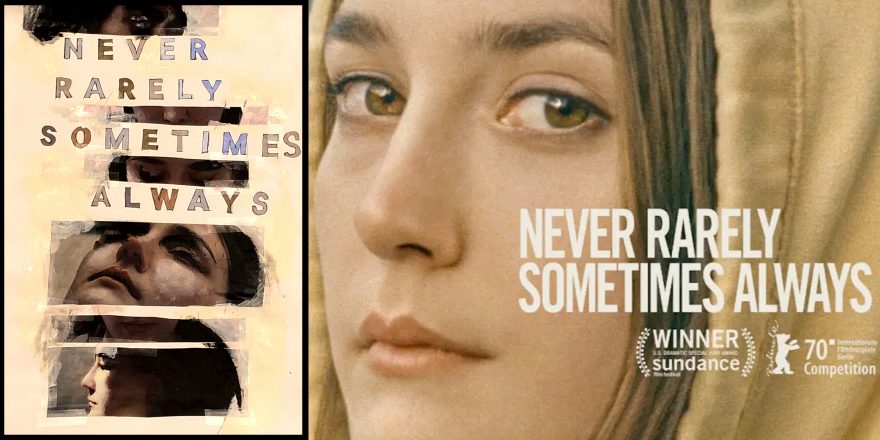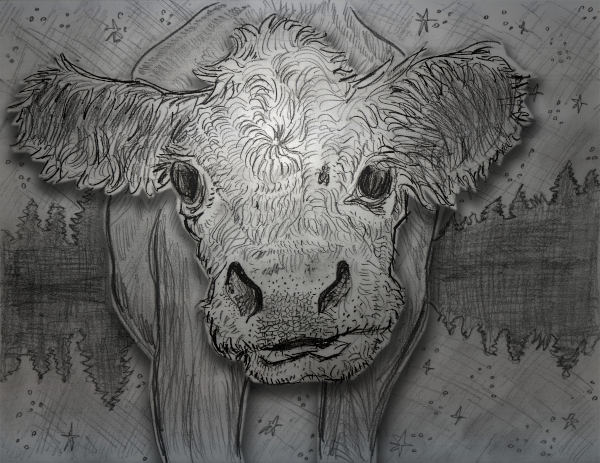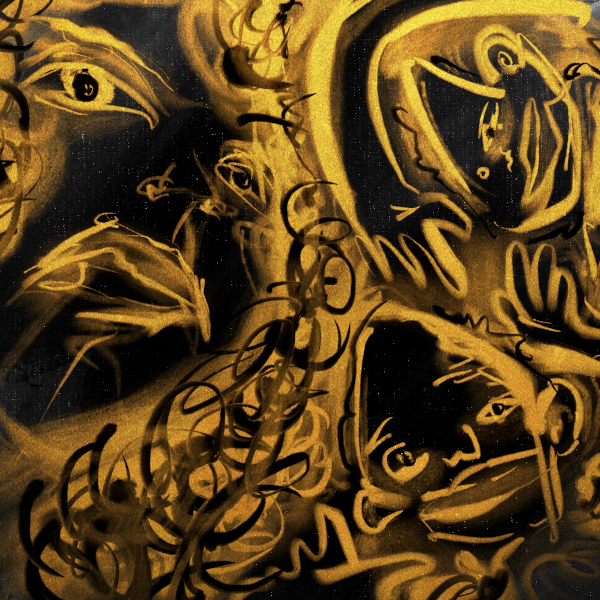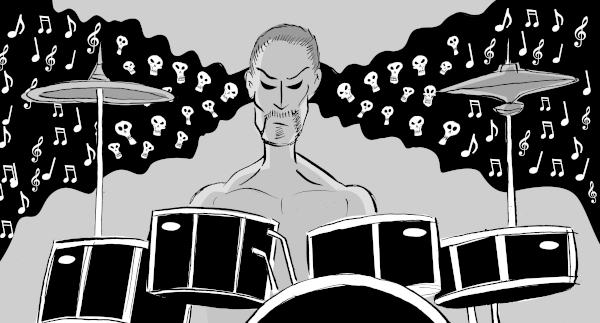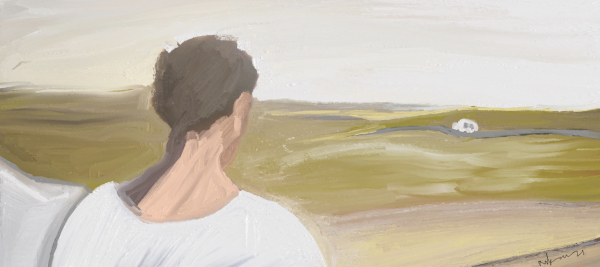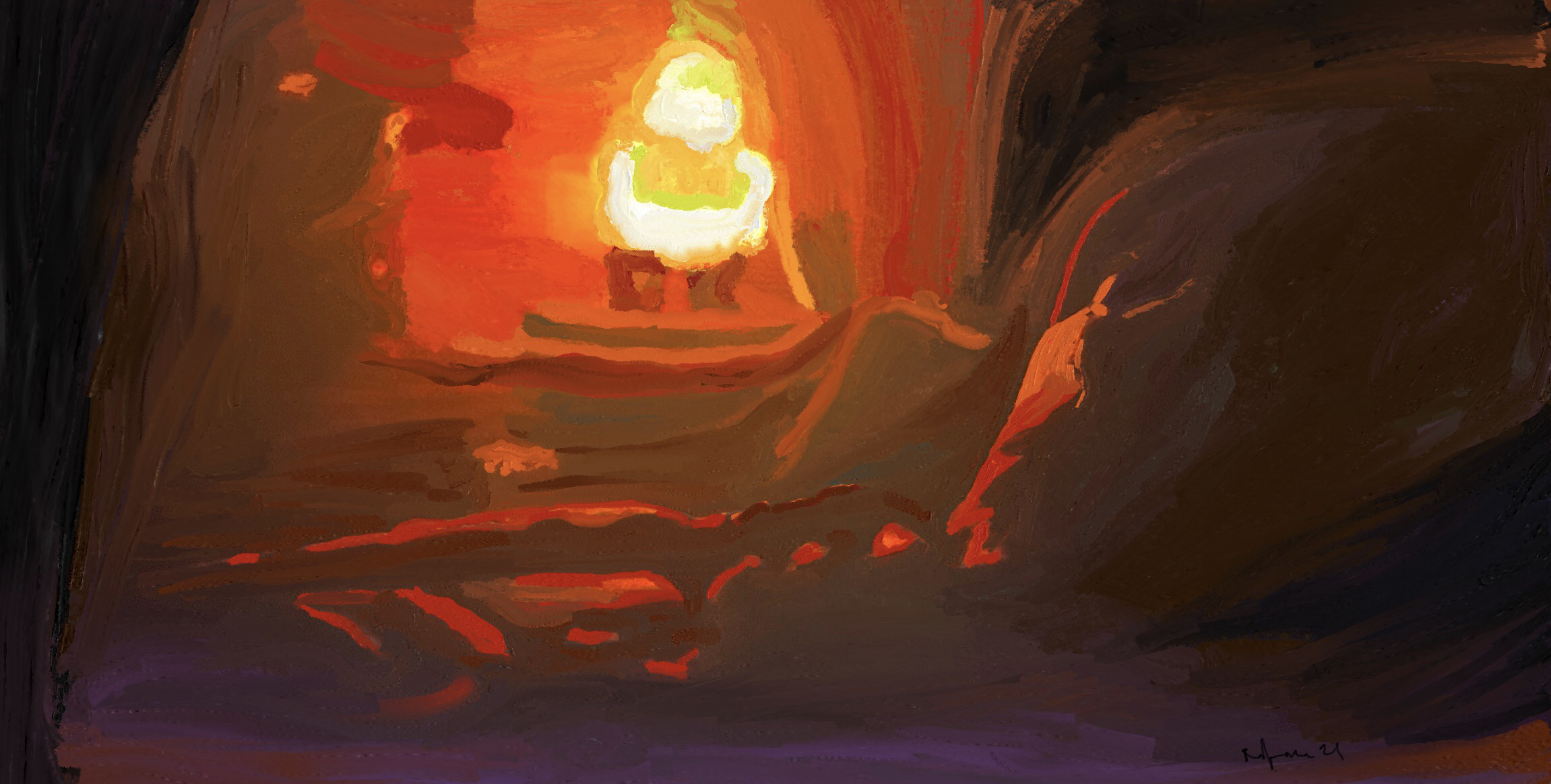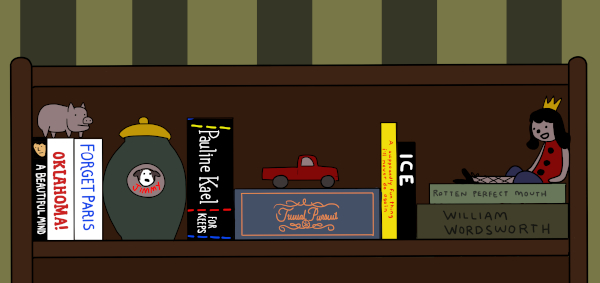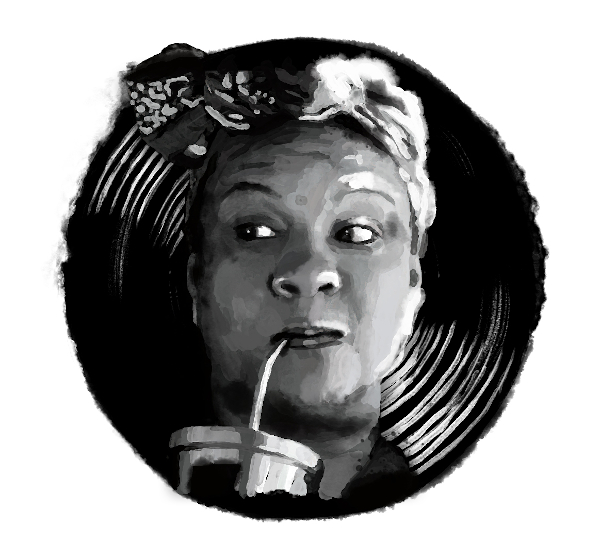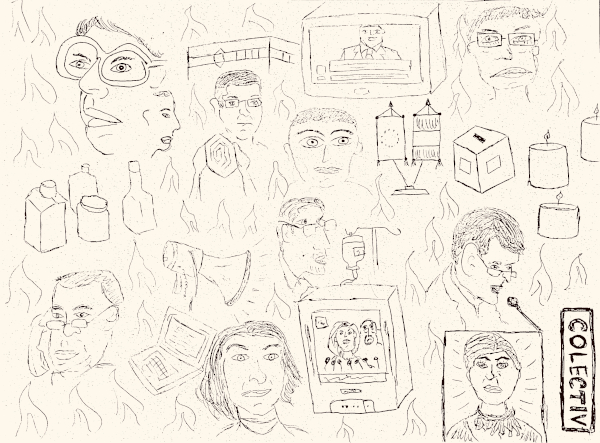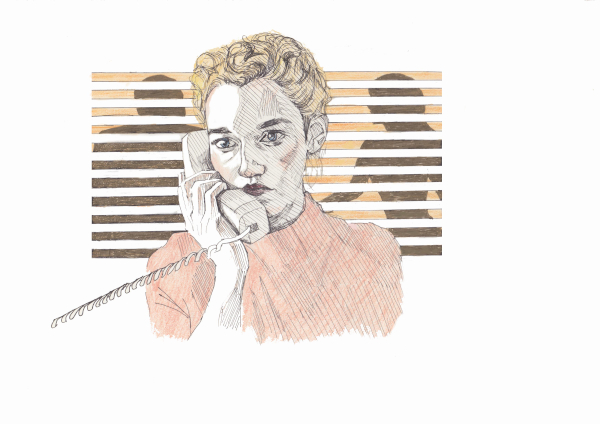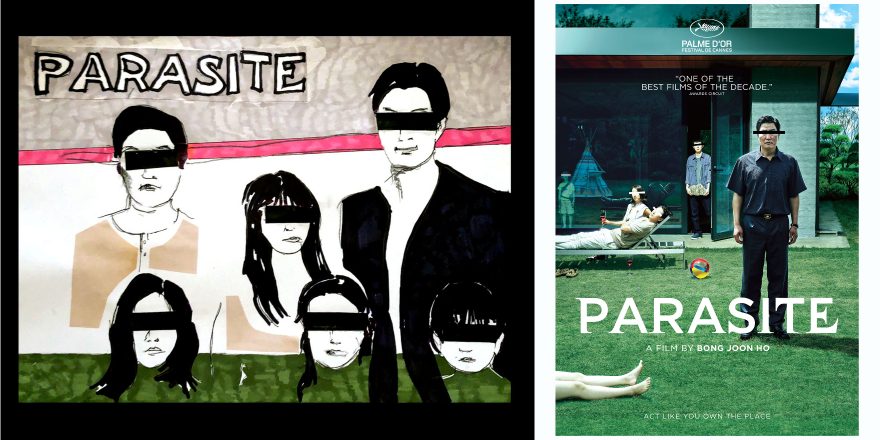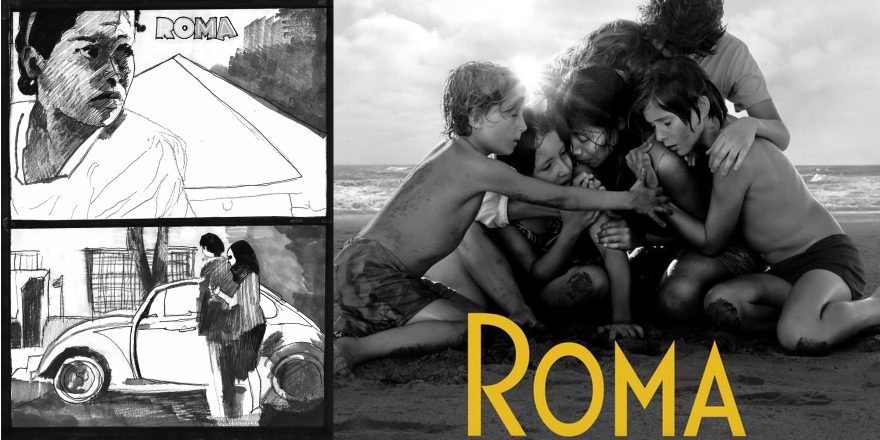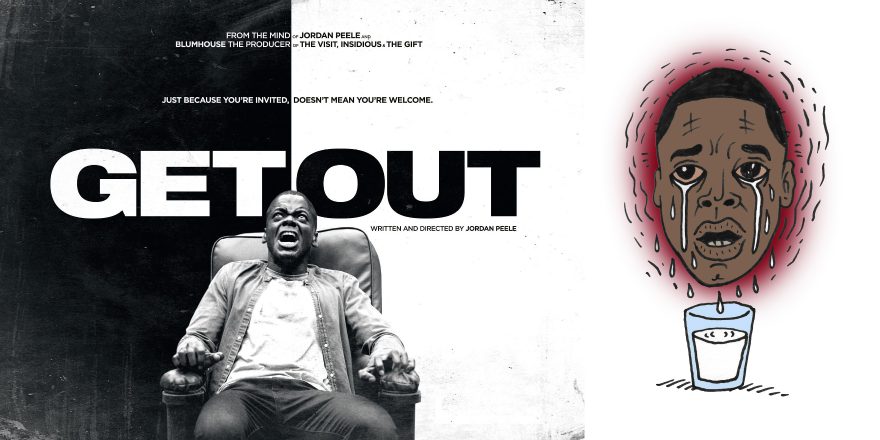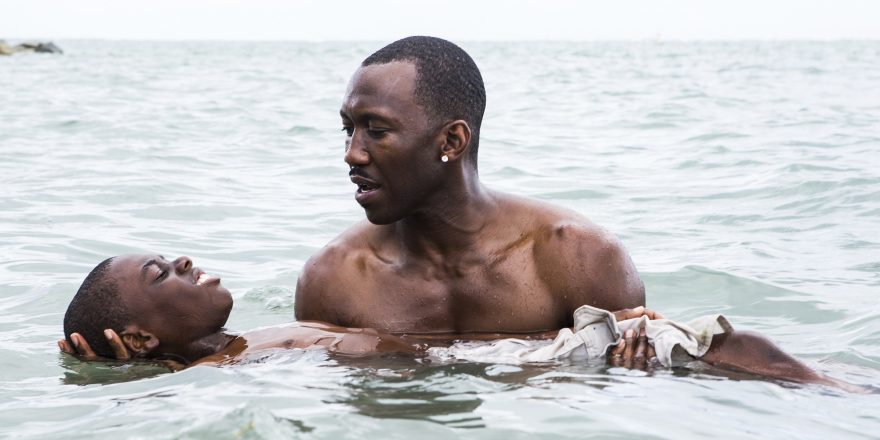Talkhouse Film contributors and a select few friends of the site voted on their favorite theatrical releases of 2020. The results of the Talkhouse Film poll are below, showing all the titles that received multiple votes; a selection of individual ballots will be posted tomorrow. Ten points were awarded to first-place films, 9 points were given to second place, etc.
Thanks to all who voted, and to the following contributors, whose wonderful written and graphic responses to the Top 10 films are featured below: Vashti Anderson, Rodney Ascher, Anna Bak-Kvapil, Nikole Beckwith, SJ Chiro, Zach Clark, Katherine Dieckmann, Megan Griffiths, Ian Harnarine, Alix Lambert, Danny Madden, Ryan McGlade, Kent Osborne, Jennifer Phang, James Ponsoldt, Cooper Raiff, Michael Reich, David Charles Rodrigues, Leah Shore and Onur Tukel. (Click on images to see them full size.)
1. Never Rarely Sometimes Always 150
Never Rarely Sometimes Always relies on the audience’s understanding of the mundane dangers the world holds for young women. Autumn (Sidney Flanigan) and Skylar (Talia Ryder) leave their small Pennsylvania town and arrive by bus to a New York City that isn’t sinister as much as it is completely ambivalent to their particular vulnerabilities. We understand the circumstance that has landed them there, Autumn’s unwanted pregnancy, and details have been scattered like so many puzzle pieces to allow us understand why there is no other choice. Autumn and Skylar approach their journey with the bravado of two people too young to fully grasp what they are getting into, or perhaps fully aware of it but simply unwilling to be daunted. Their relationship offers a glimpse at a particular kind of no-questions-asked, everyday solidarity that can exist between women. The suitcase they drag along feels like an albatross around their necks – an impediment to their freedom, like a physical manifestation of the oppressive laws forcing them to cross state lines in the first place.
Director Eliza Hittman lets her camera linger, centering a character grappling with an exceedingly personal issue while also finding herself subject to the prevailing winds of a national political conversation. Autumn’s stoic exterior masks an increasingly panicked interior, someone who knows her mind but also feels at sea, someone who needs help desperately but struggles to ask for it or even accept it when it is offered. In the titular scene, as Autumn is gently asked probing questions about her sexual history by the counselor at the abortion clinic, the camera never leaves her as her complicated history reveals itself on her face. It is a scene that represents the quiet power of Hittman’s filmmaking, which is unfailingly authentic, subtle, and personal, and which always packs one hell of a punch. (Megan Griffiths)
Image by Alix Lambert
2. Lovers Rock 115.5
I got a lot of feelings when I saw Lovers Rock for the first time. Familiarity of the distinct West Indian accents and respect for not trying to tone them down. A longing for people that remind me of the characters. Hunger for the food on display. Community that was built in that house. Astonishment at the moments that happened during the production and luck that a camera was turned on to capture. Pride that a film finally captures a bit of my culture. Finally, an overwhelming sense of sadness knowing that I will never make anything that perfect. (Ian Harnarine)
Image by Zach Clark
3. First Cow 108
First Cow” was the last film of 2020 I saw on a big screen with an audience before, well, you know.
It was late February. And, in retrospect, it seems like a fitting choice for a final moviegoing experience. First Cow – much like this entire quarantine year – compelled me to think about home as both a physical space and a concept that we construct, that we defend, and that is, hopefully, filled with love.
Kelly Reichardt and Jon Raymond’s creative collaboration has lasted decades, and their stories have spanned centuries. First Cow continues that conversation. The film begins with the discovery of old bones in a forest, and then becomes a time machine bringing to life a fully realized 19th century Oregonian farmer’s market.
At its core, First Cow is a lovingly-drawn portrait of true partnership between two drifters who stop drifting when they find each other.
There’s a crime in First Cow. (Turns out, the milk of human kindness can be stolen.) There’s punishment, too. But there’s no justice. There is love, however, and like the wafting smell of the film’s “oily cakes,” it has the power to nourish.
First Cow opens with the poetry of William Blake: “The bird a nest, the spider a web, man friendship.”
In this pandemic year of sourdough starters and sheltering in place, I was deeply moved by the idea that companionship – and good food – might anchor our endless drift and civilize a restless heart. (James Ponsoldt)
Image by Rodney Ascher
4. Time 97.5
Garrett Bradley’s documentary is an art piece that is not just watched but felt by everyone. Because Time is a testament to how unconditional love can overrule our very notion of time. In this era of impatience, where our bonds, values and ties are challenged every minute, the story of this family, of the endurance of this couple, fills me with hope. In this film, waiting is growing. Not giving up is the only option. And at the end, it reminds us that sometimes an entire lifetime can be just the beginning. (David Charles Rodrigues)
Image by Danny Madden
5. Sound of Metal 95.5
Good lord, Riz Ahmed is talented, and he glimmers in this beautifully constructed film. Masculinity, gravity, sexuality, depth. Not a joke as a person. Not a joke as a South Asian. Not exoticized. A human, compelled into a new experience and a new life. As a fellow South Asian, this was refreshing and inspiring. I don’t have extensive experience with the deaf community, or with addiction, or with metal, but the film felt authentic and relatable, because the portrayal was so human. Riz offered himself with such vulnerability, a huge risk for an actor and a dream for a director. Darius Marder took good time to craft the film, and it shows. The sound design is not a complement to the story, but crucial to understanding Ruben’s experience on a most visceral level. A film like this does what extraordinary literature does, transports us into experiences that we may not be able to have in our real lives, allows us to empathize, walk through space in a new point of view, feel emotions as if they were ours, believe in a character’s intentions, however flawed, without judgement – because we are them. We need this experience now more than ever. May we see our collective hopes (and desperation) manifest positively and with unity in 2021. (Vashti Anderson)
Image by Onur Tukel
6. Nomadland 91
Writer-director Chloe Zhao brilliantly refined the strategies of her first two features – blending fiction and fact, lyricism and grit – and focused even more closely on the art of intimate collaboration, not least with her inspired D.P. and production designer Joshua James Richard. She also nudged the most truly Frances McDormand-like performance out of Frances McDormand, whose long gazing spells into space keep us closely attuned to a state of perpetual grieving. But there is also evidence of a powerful, enduring life force here amid the isolation and looming sense of mortality. It’s in the landscape itself, and the way people interact with each other, the constant possibility of beauty and a two-step around tough times, like the one McDormand performs with the great David Strathairn (the only other professional actor in sight). No film this year championed the necessity of communal ritual and keeping an eye out for those living in hardship more than this one, which made it spectacularly timely, but also a major balm. Among so many resonant moments in Nomadland, I was profoundly moved by Swankie and her swallows, the rock tossed in the bonfire to commemorate her passage out, and the repeated promise to meet again down the road, even if it’s just a way to break the inexorable sting of solitude and loss, even if it’s merely mythology. We take comfort where we can. (Katherine Dieckmann)
Images “Watching Him Get Smaller” and “Sleeping by Santa Light” by Nikole Beckwith
7. I’m Thinking of Ending Things 87.5
Anomalisa was my favorite movie of 2015. Synechdoche, New York was my favorite movie of 2008. It’s a pattern. Charlie Kaufman keeps on making movies and I keep on loving them. I’m Thinking of Ending Things is no exception. At times it feels less like a movie and more like a puzzle, one that becomes clearer the more you watch it … but also more confusing? Multiple viewings are a requirement for Kaufman films. When I saw Synechdoche for the first time, I sat in the theater until the next showing and immediately watched it again. (Sidenote: The only other movie I did this with is My Cousin Vinny.)
I’m Thinking Of Ending Things is a pretty perfect movie for pandemic times. You feel trapped. Time loops and folds over itself. Nothing is real and everything feels like it has multiple meanings. It’s kinda funny, but also really heavy. Terror is just underneath the surface of every moment but never quite shows itself. And that pig. With rotting maggots. Hasn’t all of 2020 just been one giant maggot infested pig of a year?
I wasn’t able to see I’m Thinking Of Ending Things in the theater of course because of stupid COVID. But if I did, I totally would have sat until the next showing to try and make sense of this mind-bending, terrifyingly perfect movie. (Michael Reich)
Image by Kent Osborne
8. The Forty-Year-Old Version 82
This film is a comedy with heartfelt power. Radha Blank, the film’s writer-director, stars as a fictionalized version of herself – a talented, near-40 Black playwright reaching for success and recognition in the New York City theatre scene while trying to stay true to her voice. We get an intimate view into Radha’s journey – from her painful creative compromises to her rediscovery of her passion for rhyme to the reclaiming of her self-respect. One detail that grabbed my attention was Radha’s rhymes calling out a moneyed, White New York literati that impresses itself with a presumed stewardship over Black voices. Radha notes the impulse of White money to fund the creation of “poverty porn” above all else. To me, the story also suggests that the impulse to own another’s story is one of many ways our world will feed an artist’s self-doubt and derail their efforts to speak about their experiences in their own voice. This was a refreshing, relatable comment on the emotional and political hurdles that storytellers of color can encounter when they have something to say. Finally, one of the most poignant details for me is Radha’s apparent avoidance of a traditional grieving process after her mother’s passing. Bravo to Radha Blank and all of the cast and crew. A person could walk away from this film feeling stronger, louder, and ready. (Jennifer Phang)
Image by Leah Shore
9. Collective 69
Collective shows the aftermath of a Bucharest nightclub fire that killed 64 people. Thirty-seven of those 64 died from burn wounds at the hospital in subsequent weeks, which ultimately led reporters to the heart of Romania’s dysfunctional medical system. Collective is a seemingly unstoppable documentary. It’s stunning what director Alexander Nanau is able to show us. And deeply upsetting. But what’s hopeful is the very human thing that allowed the camera into those rooms to show us the tailspin. As the minister of health faces pushback from doctors resistant to hospital reform and citizens upset with zero solutions, he says, “It’s like we are living in separate worlds.” When a reporter is accused of making it harder for doctors to do their jobs, he falls back on his purpose of giving people “more knowledge about the powers that shape their lives.” There are profound questions here about democracy and collective decision-making. It’s difficult to watch, but it made me think a lot about what’s better and what’s good and what’s possible. It can come across as so hopeless, but this documentary is deeply personal and alive and determined (which is to say, full of hope). (Cooper Raiff)
Image by Ryan McGlade
10. The Assistant 66.5
Jane (Julia Garner) wakes up pre-dawn to be the first one in the office. She is the last to leave. Five weeks on this job have already taken a toll. She forgets her father’s birthday, overwhelmed by menial tasks, including janitorial chores, and is ground down by the stifling fear that permeates the office. The Assistant unfolds over the course of one day and is meticulous in depicting life in this office under the iron fist of the abusive, unseen boss who, we realize, is sexually molesting young women looking for work.
The film responds to the question, “How come nobody said anything?” The office is kept in a state of fear and competition. Employees walk on eggshells, knowing their jobs are always on the line. There is a malaise over the office, a constant thrum of oppression, and everyone who works there is complicit.
In short: Toxic Capitalism keeps abuse alive.
In her deft, tight, brilliant film, Kitty Green shines a light not only on sexual abuse in the workplace, but, by extension, on issues like racism and homelessness also. Why do people sit by and tolerate what should be unequivocally intolerable?
When Jane leaves the office at night, she contemplates her workplace. She has a choice to make. We all do. Which horrors are we willing to facilitate and excuse? (SJ Chiro)
Image by Anna Bak-Kvapil
11. Crip Camp 65.5
12. Mank 57.5
13. Bacurau 55
=14. Da 5 Bloods 54.5
=14. The Vast of Night 54.5
16. Palm Springs 52.5
17. The Invisible Man 51
18. Gunda 47
=19. Borat Subsequent Moviefilm: Delivery of Prodigious Bribe to American Regime for Make Benefit Once Glorious Nation of Kazakhstan 44
=19. Dick Johnson is Dead 44
21. Beanpole 43
22. Boys State 34.5
=23. Portrait of a Lady on Fire 34
=23.The Painter and the Thief 34
25. Emma 32
=26. Mangrove 31
=26. Possessor: Uncut 31
28. His House 30.5
=29. Feels Good Man 28
=29. Minari 28
=29. The Trial of the Chicago 7 28
32. Shirley 27
33. The Nest 24.5
34. Swallow 24
=35. The Last Dance 23
=35. Cuties 23
37. Tenet 22
38. Ham On Rye 21
=39. The Social Dilemma 20
=39. City Hall 20
=41. Black Bear 19
=41. Crazy, Not Insane 19
=41. Fire Will Come 19
=41. Fourteen 19
=41. Kajillionaire 19
=41. The Twentieth Century 19
47. Color Out of Space 18
48. Gretel & Hansel 17.5
=49. Promising Young Woman 17
=49. Birds of Prey (and the Fantabulous Emancipation of One Harley Quinn) 17
=49. Martin Eden 17
=52. Pahokee 16
=52. She Dies Tomorrow 16
=52. Vitalina Varela 16
=52. Soul 16
=56. Beastie Boys Story 15
=56. Education 15
=56. Troop Zero 15
=56. VHYES 15
=56. Liberté 15
61. You Cannot Kill David Arquette 14
=62. About Endlessness 13
=62. Bull 13
=62. David Byrne’s American Utopia 13
=62. Let Him Go 13
=62. My Octopus Teacher 13
=62. Tesla 13
=62. The Gentlemen 13
=69. Nimic 12
=69. Wolfwalkers 12
=69. I Was at Home, But… 12
72. The Old Guard 11.5
=73. Happiest Season 11
=73. A Rainy Day in New York 11
=73. Blood Quantum 11
=73. The Climb 11
=73. The Half of It 11
=73. The Painted Bird 11
=73. Tito 11
=73. To the Ends of the Earth 11
=81. Wonder Woman 1984 10
=81. Ammonite 10
=81. Class Action Park 10
=81. Disclosure 10
=81. Save Yourselves! 10
=81. Straight Up 10
=81. Vivarium 10
=88. Babyteeth 9
=88. Scare Me 9
=90. Capone 8
=90. The Go-Gos 8
=90. The Whistlers 8
=93. 76 Days 7
=93. Bloody Nose, Empty Pockets 7
=93. Mucho Mucho Amor 7
=93. The Devil All the Time 7
=97. Underwater 6
=97. Run 6
=97. Spaceship Earth 6
=100. Being a Human Person 5
=100. Ma Rainey’s Black Bottom 5
=100. The Hunt 5
=100. The Outpost 5
=100. The Way Back 5
=105. All In: The Fight for Democracy 4
=105. Hamilton 4
=105. Lingua Franca 4


